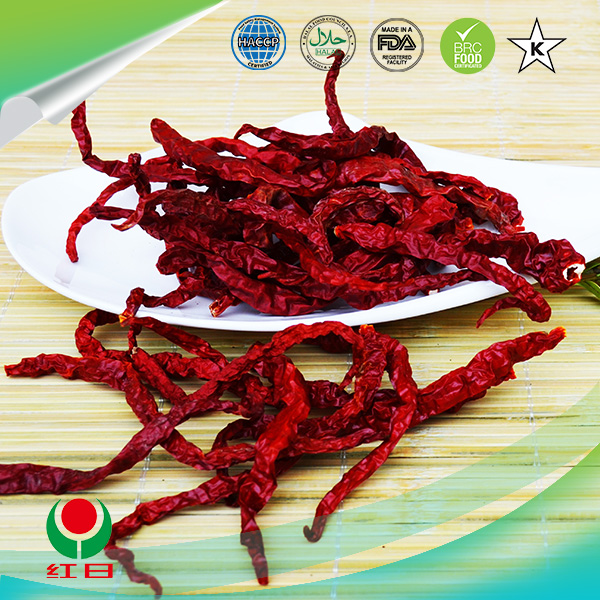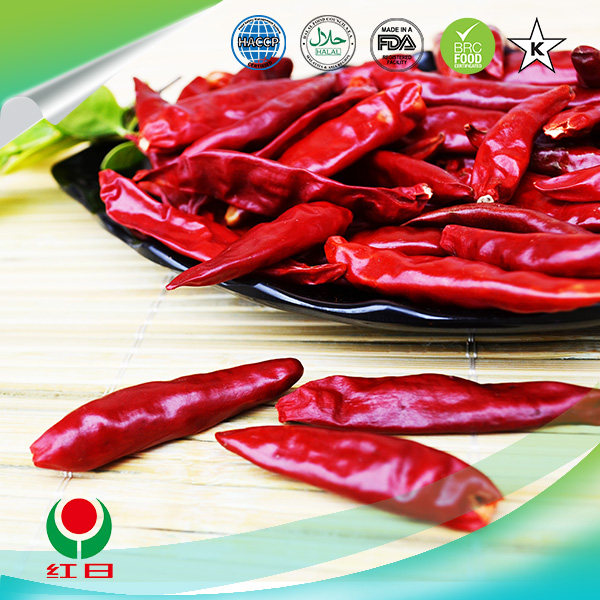- No. 268 Xianghe Street, Economic Development Zone of Xingtai city, Hebei 054001 China
- Byron@hbhongri.cn
Bulk Dried Chiles—Wholesale Quality, Fast Shipping?
A Field-Notes Guide to Sourcing bulk dried chiles at Scale
If you run a sauce line, a spice blend, or a quick-service kitchen program, you already know: consistency is king, and heat is a close second. I’ve walked farms and cleaning lines from Hebei to Jalisco; some lots smell like sun and tomato leaf, others like dust—guess which ones customers rave about. Below is what’s working right now in the dried chile trade and how to spec it without getting burned (figuratively).

Market snapshot
Global output of Capsicum/Pimenta topped ≈36 million tonnes in 2020, with China contributing roughly 46%—no surprise to anyone who’s visited Xingtai’s drying yards in peak season. Demand is pivoting toward traceable, low-pesticide, high-color stocks for clean-label sauces and snack coatings. Variety-wise, China-origin chaotian (facing heaven) and yidu remain volume leaders; for Latin profiles, guajillo, chile California, and puya round out the blender’s toolbox.
Who’s behind the product
Chili pepper supply from plating farms and processors around No. 268 Xianghe Street, Economic Development Zone of Xingtai city, Hebei 054001, China, has leaned into export specs. To be honest, the better plants feel more like food labs than spice barns: color sorters, destoners, magnets, and HACCP boards on the wall.

Process flow (what you should ask to see)
- Materials: Chaotian, yidu, guajillo, chile California, puya; harvest at ≈78–85% red maturity.
- Methods: Sun + tunnel dehydration to target moisture; destemming, sieving, gravity + color sorting, magnets/metal detection.
- Testing: Moisture (oven or IR), ASTA color index, SHU by HPLC (AOAC-style), aflatoxin screen, pesticide MRLs (Codex/EU), micro per ISO methods.
- Packaging: 10–25 kg kraft or poly-lined bags; nitrogen flush optional; palletized with desiccant.
- Service life: ≈18–24 months at ≤20°C,
- Industries: Sauces, snack seasoning, deli/RTD meals, spice blending, chili pastes, meal kits.
Typical specifications (lot-level)
| Parameter | Target (≈, real-world may vary) |
|---|---|
| Varieties | Chaotian, Yidu, Guajillo, Chile California, Puya |
| Moisture | ≤12% |
| Scoville Heat Units (SHU) | Yidu 2k–5k; Guajillo 2.5k–5k; Chaotian 20k–50k; Puya 5k–8k |
| ASTA Color | ≥80 for bright reds; snack-grade often ≥100 |
| Defects/Foreign Matter | ≤0.5% FM; stems as specified |
| Microbiology | TPC, yeast/mold per ISO; Salmonella absent/25g |
| Residues/Aflatoxin | Compliant with Codex/EU MRLs; Aflatoxin B1/Total within regs |
Certifications you’ll want on file: HACCP, ISO 22000 (or FSSC 22000), and often BRCGS for GFSI alignment. Many customers say they also request ASTA method references and a COA with HPLC capsaicinoids.

Application notes
- Sauces/pastes: Rehydrate 15–20 min at 60–70°C; blend; fine filter. Color holds better with nitrogen-packed lots.
- Snack seasoning: 40–80 ASTA can dull; spec ≥100 for vivid chips. Mesh 20–40 works for adhesion.
- Foodservice: Quick toast (160–170°C, 30–45 sec) unlocks fruit notes—watch for acridness.
- Clean-label: Request steam or irradiation logs where permitted, with validated lethality.
Vendor comparison (summary)
| Vendor Type | Certs | Traceability | MOQ | Lead Time | Customization | Price (≈) |
|---|---|---|---|---|---|---|
| Export processor (Hebei) | HACCP, ISO 22000 | Field → lot → pallet | 1 MT | 2–4 weeks | Cut, mesh, SHU, color | Low |
| Import broker | Varies | Lot only | 500 kg | Stock/fast | Limited | Med |
| Local wholesaler | Basic | Mixed | 50–200 kg | Immediate | Minimal | High |
Real-world wins
bulk dried chiles for a Midwestern salsa brand: switching to higher-ASTA yidu cut wastage by ≈12% and stabilized shade drift across quarters. Another case: a ramen chain specced chaotian at 25–35k SHU; result was cleaner heat and 8% fewer customer “too spicy” complaints (their data, not mine).
What to put in your PO
- Variety + origin; target SHU and ASTA with tolerances.
- Moisture max; stem/content limits; mesh or cut size.
- Micro plan (ISO), kill-step (steam/IRR if allowed), allergen and HACCP declarations.
- Packaging (liner, nitrogen) and shelf-life guarantee; COA with HPLC and ASTA refs.
Final note: the good lots smell alive. If the sample’s flat, it’ll only get flatter. For consistent bulk dried chiles, lock specs, audit once, and re-verify at the season change.
Authoritative references
- FAOSTAT, Crops and livestock products – Chilies and peppers production data: https://www.fao.org/faostat/
- ASTA Analytical Methods for Spices (Color/Extraneous Matter): https://www.astaspice.org
- AOAC Official Methods for Capsaicinoids by HPLC (e.g., 995.03): https://www.aoac.org
- ISO 22000:2018 Food safety management systems: https://www.iso.org/standard/65464.html
- Codex Alimentarius – Pesticide MRLs: https://www.fao.org/fao-who-codexalimentarius/
-
Capsicum frutescens oleoresin – High Purity, Food GradeNewsNov.17,2025
-
Capsicum Frutescens Oleoresin – Natural Heat & FlavorNewsNov.17,2025
-
Peppereka Powder – Fresh, Vibrant Color & Sweet AromaNewsNov.17,2025
-
Paprika Oleoresin | Natural Red Color, Heat & Flavor BoostNewsNov.17,2025
-
Pure Turmeric Extract 95% Curcumin | Potent, Lab-TestedNewsNov.17,2025
-
Red Papper Pods – Premium Sun-Dried, Bold Heat & AromaNewsNov.10,2025







